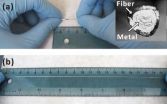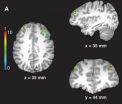(Press-News.org) Despite earlier signs that a less-invasive surgery is safer and better than "open" operations to repair potentially lethal abdominal aortic aneurysms, a study led by a Johns Hopkins professor shows survival rates after four years are similar for both procedures.
In an extended follow-up of patients in the OVER (Open Versus Endovascular Repair) Trial, researchers found that, contrary to expectations, the two procedures carried about the same long-time survival after four years, even though survival was higher in the endovascular group at the two-year mark. Moreover, among elderly patients often considered too weak to undergo traditional blood vessel repairs, results showed they did not do better with an operation that avoids fully opening the abdomen.
Instead, the OVER trial showed that the minimally invasive operation did not result in increased survival in patients 70 years and older, with benefits confined mainly to those who are younger, according to Julie A. Freischlag, M.D., director of the Department of Surgery at the Johns Hopkins University School of Medicine and leader of the national trial.
A report on the study, which followed patients for up to nine years, appeared in the Nov. 22 issue of The New England Journal of Medicine.
"Overall, the results suggest that the outcomes following endovascular repair continue to improve and the procedure is now an acceptable alternative to open repair, even when judged in terms of long-term survival," says Freischlag, a professor of surgery at Johns Hopkins and a vascular surgeon at the Baltimore VA Medical Center, one of the sites where the study was conducted. "But this research raises a new question of whether older patients should even have their aneurysms repaired, because even when they were fixed, it did not prolong life. They are dying of the diseases of old age."
Abdominal aortic aneurysms occur when the wall of the body's biggest blood vessel, at its location in the abdomen, balloons. If an aneurysm ruptures, severe bleeding is often quickly lethal, so when a dilated vessel over two inches is discovered, surgeons often try to repair it. Abdominal aortic aneurysm is the 14th-leading cause of death for the 60- to 85-year-old age group in the United States.
An open surgery involves a large incision made in the belly to clamp, cut out the bulge, and replace the weakened part of the aorta with a graft, an operation that costs about $5,000. Patients are at risk of long hospital stays, pain and an increased risk of infections, risks associated with most major operations.
With endovascular repair, a tube or stent containing the graft is threaded into an artery through a small incision near the groin, then pushed up into the aorta. Once in the right place, the sheath on the tube is pulled back and the graft pops out to sit inside the aneurysm. The aneurysm isn't cut out, but is contained in a way that defuses the danger of rupture.
This graft costs about $35,000 and only works on patients with the appropriate anatomy to fit the graft. Those who have endoscopic repair must be monitored by CT scans every six months to make sure the graft has not shifted out of place.
For the OVER study, 881 patients ages 49 and older at 42 Veterans Affairs medical centers were randomly assigned to either endovascular repair or open repair beginning in 2003, and were followed for up to nine years. The average age of the patients was 70.
In each group, 146 deaths occurred from all causes. There were 10 aneurysm-related deaths (two within 30 days of surgery and eight later) in the endovascular repair group, and 16 (13 in the first 30 days and three later) in the open repair group. Six aneurysm ruptures were confirmed in the endovascular group; none occurred in the open repair group. The researchers say the ruptures occurred only in patients who did not have regular, recommended CT scans.
Each year, 40,000 people in the United States undergo elective abdominal aortic aneurysm repairs. Some 1,250 people die within the first 30 days after surgery — more than for any other general or vascular surgical procedure, with the exception of colon removal.
People who have abdominal aortic aneurysms are older, usually men and often smoke cigarettes. Freischlag says that people under 70 and who are more likely to follow through with CT scans will benefit from endovascular repair. But it definitely is not best for the older patients for which it was envisioned to be a better option, she says.
"If a patient is young enough and healthy enough to have the open repair, it's a good way to go, because it's cheaper, easier to do and does not require follow-up CT scans every six months," Freischlag says. "But if patients are older and in poorer health, repair may not be an option. Costs and benefits must be carefully weighed for each individual."
###
The study was supported by the Cooperative Studies Program of the Department of Veterans Affairs Office of Research and Development.
For more information:
http://www.hopkinsmedicine.org/doctors/results/directory/profile/0018118/juliefreischlag?namesearch=go&jh_doc=yes&lastname=freis&hch_doc=no&cp_doc=yes&clearpagecache=false&gs_doc=yes&vip_doc=false
Amsterdam, December 18, 2012 - Sexual and reproductive morbidities are not a priority in health policy. They do not feature among donors favourite health initiatives and remain outside the global health agenda. In many parts of the world practice is stubbornly failing to catch up with national policies, leaving shortfalls in every area of care. This, despite the enormous impact such morbidities have on the lives of women, men and their families, is something that is illustrated in a number of papers published in the latest issue of Reproductive Health Matters (RHM) which ...
Rosemont, Ill. - The American Academy of Orthopaedic Surgeons (AAOS), and the American Dental Association (ADA) found that there is insufficient evidence to recommend the routine use of antibiotics for patients with orthopaedic implants to prevent infections prior to having dental procedures because there is no direct evidence that routine dental procedures cause prosthetic joint infections.
The AAOS and ADA's recommendations are based on a collaborative evidence-based clinical practice guideline that focuses on the possible linkage between orthopaedic implant infection ...
CHAMPAIGN, lll. — In the early 1900s, an archaeologist, William Mills, dug up a treasure-trove of carved stone pipes that had been buried almost 2,000 years earlier. Mills was the first to dig the Native American site, called Tremper Mound, in southern Ohio. And when he inspected the pipes, he made a reasonable – but untested – assumption. The pipes looked as if they had been carved from local stone, and so he said they were. That assumption, first published in 1916, has been repeated in scientific publications to this day. But according to a new analysis, Mills was wrong.
In ...
Researchers from North Carolina State University have created conductive wires that can be stretched up to eight times their original length while still functioning. The wires can be used for everything from headphones to phone chargers, and hold potential for use in electronic textiles.
To make the wires, researchers start with a thin tube made of an extremely elastic polymer and then fill the tube with a liquid metal alloy of gallium and indium, which is an efficient conductor of electricity.
"Previous efforts to create stretchable wires focus on embedding metals ...
Reappraisal is a widely-used cognitive strategy that can help people to regulate their reactions to emotionally charged events. Now, new research suggests that reappraisal may even be effective in changing people's emotional responses in the context of one of the most intractable conflicts worldwide: the Israeli-Palestinian conflict.
"Negative intergroup emotions play a crucial role in decisions that perpetuate intractable conflicts," observes lead researcher Eran Halperin of the New School of Psychology at the Interdisciplinary Center in Israel.
With this in mind, ...
Planetary nebulae represent a final brief stage in the life of a star like the Sun. While consuming the last of the fuel in its core, the star expels a large portion of its outer regions, which then heats up and glows brightly, showing intricate structures that scientists are still trying to fully understand. The structure visible within NGC 5189 is particularly dramatic, and Hubble's image of the nebula is by far the most detailed yet made of this object [1].
Hubble has been a key tool for studying planetary nebulae for years, and many of its images have become famous. ...
Alexandria, VA – In 1859, the largest recorded coronal mass ejection (CME) from the sun, known as the Carrington Event, disrupted what little electrical technology was used at the time. Back then, that meant the temporary disruption of the telegraph system. Today, without an effective warning mechanism in place, a solar storm of that magnitude could wreak havoc on our technology-dependent world. And with the solar maximum predicted to occur later this year, scientists and policymakers are scrambling to prepare us for when the next big solar storm hits.
CMEs occur when ...
"Bah, humbug!" is the line most closely associated with Ebenezer Scrooge, the famous miser from "A Christmas Carol."
But the authors of a new study on life-changing experiences give author Charles Dickens high marks for his portrayal of Scrooge's sudden switch to saintliness.
Former grad student Jon Skalski and Brigham Young University psychology professor Sam Hardy conducted an in-depth study of 14 people who experienced profound, sudden and lasting change. They say the fictional Scrooge would fit right in.
"Like our participants, Scrooge was suffering," Skalski ...
Humans are adept at setting goals and updating them as new situations arise — for example, a person who is playing a video game may switch to a new goal when their phone rings.
Now, Princeton University researchers have identified mechanisms that govern how the brain incorporates information about new situations into our existing goals, according to research recently published in the Proceedings of the National Academy of Sciences (PNAS).
Using brain scans of human volunteers, researchers at the Princeton Neuroscience Institute (PNI) found that updating goals takes ...
MINNEAPOLIS / ST. PAUL (12/18/2012) —The Green Revolution has stagnated for key food crops in many regions of the world, according to a study published in the Dec. 18 issue of Nature Communications by scientists with the University of Minnesota's Institute on the Environment and McGill University in Montreal, Canada.
Led by IonE research fellow Deepak Ray, the study team developed geographically detailed maps of annual crop harvested areas and yields of maize (corn), rice, wheat and soybeans from 1961 to 2008. It found that although virtually all regions showed a yield ...




